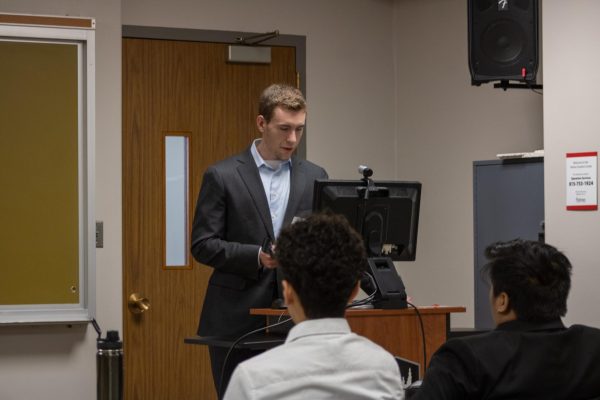Shattered Glass
November 13, 2003
In journalism, one man’s downfall is another’s breakthrough.
This could be the most important lesson learned from the new film “Shattered Glass.” The movie tells the true story of Stephen Glass, a reporter who was caught making up stories for the prestigious magazine The New Republic in 1998.
The movie paints Glass not as misunderstood, but as extremely convincing. We really want to believe Glass’ stories that he dishes out at his editors meetings, but we know they’re false. We cringe as his editors believe his stories.
-Right away, we learn the median age of reporters at The New Republic in 1998 was 26. When a staff is comprised of so many young people, competition can be fierce, as Glass states through his narration. What is necessary for survival is an editor who can get reporters to work together and cooperate. Most importantly, an editor needs to keep the competition sane so reporters are not tempted to conjure up false stories in order to break ahead of their fellow reporters.
We see Glass pitch story after story to his editors, and story after story gets printed. However, things change when The Republic prints a story Glass pens about a hacker convention.
A reporter at a rival publication, Forbes Digital, is scolded by his editor as to how Glass beat him to the story. The reporter, Adam Penenberg, is shocked and decides to do some “fact checking” into Glass’ story.
This is where the film takes off. We love watching Penenberg find falsities in Glass’ story — it’s like watching a lion going after a fresh kill. We know Glass’ downfall will make Penenberg famous, thus leading to the theme of professional journalism.
Hayden Christensen plays Glass, and pretty much proves himself as an actor after his atrocious performance in “Star Wars Episode II: Attack of the Clones.” His Glass is one of youthful enthusiasm, but also of sinister reserve. Unlike Anakin Skywalker of “Star Wars,” we can see Christensen capture Glass’ breaking point. There’s a startling moment near the end of the film when he sits in complete silence while his lies are read aloud to him, the camera focusing still on his face. This scene is both Christensen’s and the film’s most impressive moment.
As much as Christensen can be credited for this, much should go to first-time director Billy Ray. Ray, who also wrote the script, knows not to spoil the film with complicated visuals or plot lines. He focuses on his impressive script, a script that doesn’t beg us to pity Glass. He provides the evidence and lets us make up our minds about Glass’ actions and the manner his behavior was treated. It’s filmmaking “fair and balanced.”
There are many other reasons to see this film, one being the outstanding performance from Hank Azaria, who plays Glass’ idolized editor Michael Kelly. A man of composure and class, Kelly never sinks to a lower standard. Even when he’s let go for seemingly bogus reasons, Kelly never stoops to childish levels. He leaves The Republic with the same professionalism as when he came in.
This leads me to the end credits, which gives us the news that Kelly was killed covering Operation Iraqi Freedom for the Atlantic Monthly. This is just another moment in the film that makes us question the way our society is run, whether it be in a newsroom, or in this case, through foreign policy.
But the big lesson of “Shattered Glass” deals with Glass’ lies. With each forgery, he risks not only his own career, but the careers and credibility of everyone in his newsroom, especially his much beloved editor, Kelly. For these reasons, it should be mandatory for every journalism student to see this film.












